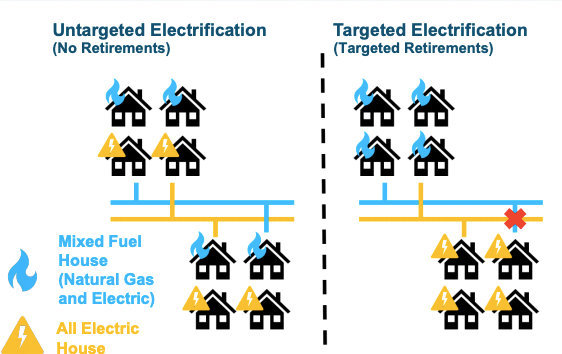 California’s buildings are one of the largest remaining emitters of greenhouse gases. Building emissions come from appliances that combust gas, such as water heaters and furnaces, but are also from our refrigerators, air conditioners and other heavy-duty appliances that are either always on or use a lot of electricity.
California’s buildings are one of the largest remaining emitters of greenhouse gases. Building emissions come from appliances that combust gas, such as water heaters and furnaces, but are also from our refrigerators, air conditioners and other heavy-duty appliances that are either always on or use a lot of electricity.
California has spent decades making our appliances more efficient through robust energy efficiency programs and other projects. But at a recent hearing at the California Energy Commission, lead Commissioner Andrew McAllister suggested a new vision for reducing the greenhouse gas pollution coming from our homes and buildings: What if the electrified devices in our home could talk to the electric grid?
The electric grid is capable of automatically communicating with our devices to slightly modify their schedule. If the devices themselves were “smart” it would help this two-way communication. If the device could respond, it could adjust to take full advantage of the electric grid to optimize the amount of carbon emissions reductions. Renewable energy generation is never constant, and slight adjustments are always needed to take advantage of renewables’ production; if the devices in buildings could automatically respond to grid conditions, we could maximize the number of renewables on our grid.
Strategies for smarter, cleaner buildings in California Share on XSpeaking for myself, I don’t care if my water heater deviates from its pre-programmed cycle by 5 minutes; I just want to take a hot shower, the heating schedule doesn’t matter to me.
Enabling our buildings to talk to the grid takes the guess work out of enhancing grid operations. It can save customers money and help integrate variable solar and wind renewable generation as much as possible. It’s an idea steadily gaining traction here in California and across the globe. (Learn more here: 6th Annual Demand Response & Distributed Energy Resources World Forum)
But first, we electrify
Getting our appliances to communicate with the electric grid is an important tool to reduce pollution. The best way to do it is to convert our gas appliances — like our stoves and hot water heaters — to run on cleaner, lower carbon sources of energy. In other words, we need to transition to all electric appliances, and we need to make sure the transition is affordable.
We have previously written about the cost implications of leaving the natural gas system, including the financial implications of legacy investments. Understanding how much money is “left in the ground” should be a key consideration in targeting which buildings to electrify and when. More customers will leave the gas system over time. At the same time, gas rates are going up and there will be fewer customers to support the expanding costs.
We need a statewide strategy to manage this transition, mitigate costs and maximize protections and paths forward for customers, the workers who service the gas lines and the economy as a whole. This transition should not be left up to chance, it should be actively managed.
Our colleagues over at Gridworks recently released a report on managing this transition. The report contains several thoughtful recommendations to decision-makers on how to best approach the transition.
Californians have spent a tremendous amount of money on our gas system. The need for this managed transition is evident so that our state can continue to have an affordable, clean and safe energy economy. With a clear plan in place, our state can honor the commitments of the past and make smarter and cleaner investment choices going forward.
As California moves to electrify its buildings and decarbonize its economy, thinking about the cost and pace of the existing assets in the ground is critical. And thinking how the buildings themselves can help be a part of an equitable and affordable solution is perhaps the most important first step.










